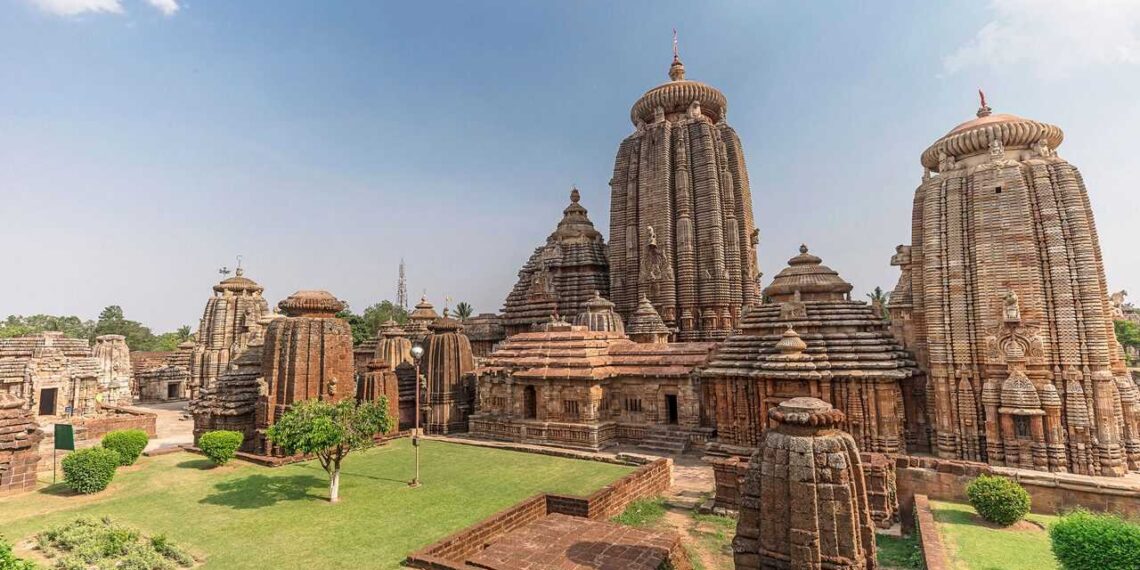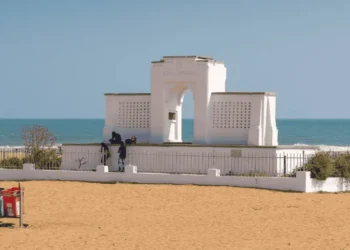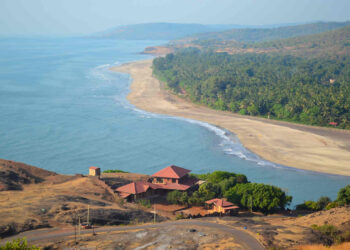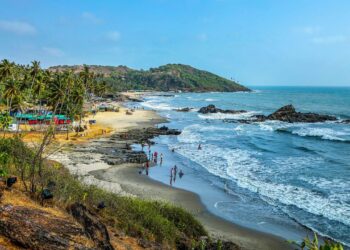Situated in the heart of Bhubaneswar, Odisha’s temple city, the Lingaraj Temple, is dedicated to Lord Harihara, a unique fusion of Lord Shiva and Lord Vishnu becoming one of India’s most revered Hindu shrines. Located about 3 km from Bhubaneswar’s main railway station, the divine presence of the devta draws devotees and pilgrims from across the country. Known as a symbol of Odisha’s spiritual heritage, the temple radiates serenity and peace. If you’re eager to visit this holy abode, here’s a detailed guide on its significance, architecture, rituals, and travel tips for your journey.
Fun Fact: The temple is called “Lingaraj” (King of Lingas) because its massive Shiva lingam is believed to be self-manifested, radiating divine power.
Mythological Importance
The Lingaraj Temple has ancient legends. One tale tells of a sage named Linga Muni, who meditated by Bindusagar Lake, seeking Lord Shiva’s blessings. Shiva and Vishnu appeared together as Harihara, uniting their powers in a single lingam. Another story speaks of King Yayati Keshari, who built the temple after a divine vision of Shiva. Local belief holds that the temple’s lake waters hold sacred energy, cleansing sins and granting peace. This makes the temple a key Harihara shrine, tied to divine harmony and grace.
Historical Overview
The temple began in the 7th century, under the Somavanshi dynasty, though some say worship started earlier. Bhubaneswar, Odisha’s capital, was a holy place, as old texts note. A stone inscription from 650 CE near the temple marks a sacred lingam, but the structure grew with Somavanshi kings. In the 11th century, King Yayati II added the main spire, as carvings show. The 1400s saw Ganga rulers build a courtyard, making it a bustling pilgrimage spot, Bhubaneswar records say. In the 1800s, local priests preserved rituals. After 1947, Odisha’s leaders took over, and the Endowments Department now tends it. From 2015 to 2020, repairs added new paths while keeping the sandstone sanctum. Odia hymns by saints like Sarala Das, who praised Shiva, spread its name. Today, it stands as a beacon of faith, calling thousands to Bhubaneswar’s sacred ground.
Architecture of Lingaraj Temple
The Lingaraj Temple, covering 5 acres, is a pinnacle of Kalinga architecture, rooted in Odisha’s spiritual charm. The deul, a 180-foot spire, rebuilt in 1100 CE, rises high with carvings of Shiva with a trident, Vishnu with his conch, and sages praying, painted in red and white. A stone gate with lotus motifs leads to the sanctum, where the Harihara lingam, 8 feet tall, rests under a stepped vimana, its sandstone glow showing purity. The sanctum’s walls, worn by time, hold Somavanshi etchings of Harihara’s tales, lit by ghee lamps.
Set by Bindusagar Lake, the temple is reached by a short walk from Bhubaneswar’s old town, with stone paths worn by pilgrims’ feet. The paths pass small boulders with ancient Shiva carvings. The temple courtyard, paved with rough sandstone, feels holy, shaded by neem and banyan trees. A stone tank, fed by the lake, is used for ritual baths, its edges carved with fish shapes, a Kalinga touch. The temple’s high walls, made of sandstone, have niches for Naga figures, said to guard the grounds.
Carvings on pillars and walls tell Harihara’s stories—Shiva’s dance, Vishnu’s avatars, and their divine union—etched to guide devotees. The 2020 repairs added sturdy paths but kept the lake’s sacred feel, making it a serene place for prayer.
Rituals and Festivals
Mahashivratri, in February or March, is the widely celebrated festival in the temple premises, honoring Harihara with Jal Abhishekam and lamp processions. Rukuna Rath Yatra, in March or April, has chariot festivals. Deepavali, in October or November, sees lamp-lighting by the lake. Daily worship includes Suprabhata Seva (morning prayers), Archana (offerings), and Sandhya Aarti (lamp ritual). Services like Rudra Homam and Vishnu Puja can be booked at the temple office. A prasad stall gives free khichdi to devotees. Bilva Archana, offering bilva leaves on Mondays, is for peace and harmony.
Information for Travelers
Hours and Entry: Open daily, 5:00 AM to 12:00 PM, then 3:00 PM to 8:00 PM. Entry is free for Hindus; non-Hindus aren’t allowed but can view from a platform. Rituals cost ₹100-500. Foreigners need permission from the temple office.
Clothing: Wear modest clothes covering shoulders and knees. Men doing rituals wear dhotis, often bare-chested, as custom.
How to Get There:
Air: Biju Patnaik International Airport, 6 km away, is nearest. Taxis take 15 minutes, costing ₹200-300.
Train: Bhubaneswar Railway Station, 3 km away, links to Delhi (24 hours) and Kolkata (7 hours). Autos to the temple cost ₹50-100.
Road: Bhubaneswar’s Baramunda Bus Stand, 8 km away, connects to Puri (1.5 hours). Autos from the city center cost ₹20-40.
Places to Stay:
Bhubaneswar offers guesthouses like Hotel Siddhartha (₹800-1500) and hotels like Mayfair Lagoon (₹3000-5000). Stalls near the temple sell puri, idli, and tea.
Best Time to Visit:
October to March has cool weather, 20-30°C. Weekdays are less crowded. Mahashivratri brings crowds, so book early.
Nearby Attractions:
Mukteshwar Temple, 1 km away, is a Kalinga gem. Rajarani Temple, 2 km away, hosts music festivals. Dhauli’s Shanti Stupa, 8 km away, is a Buddhist site.











